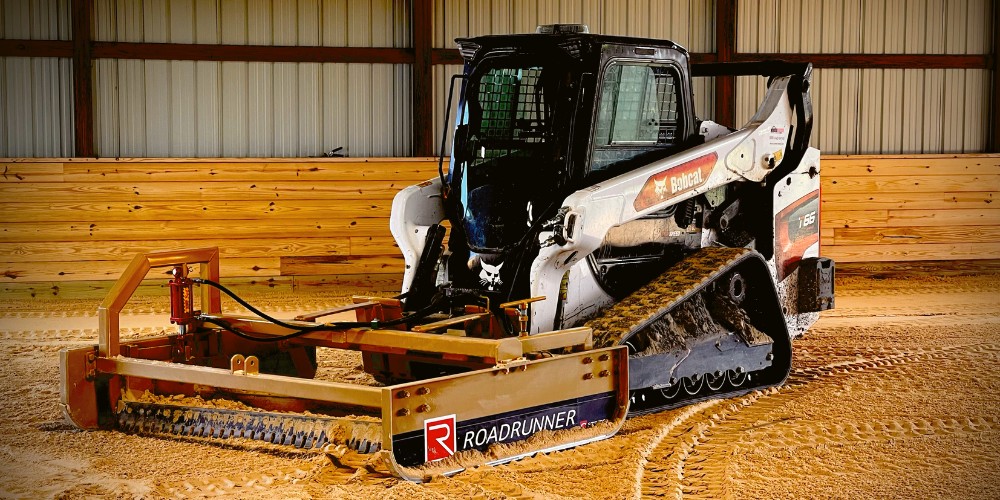Skid-steer and tractor grading attachments aren’t just for grading your gravel, roads, lanes, and pathways. There are many other places where a surface may need to be smooth and level. One of these is equestrian facilities.
In the equestrian world, it’s important to keep walking and riding areas safe for horses. Keep reading to learn more about using a skid-steer grader to grade arenas, paths, training tracks, and riding trails.
The Riding Surface
Whether your horse is jumping, galloping, or just relaxing, the surface where their feet land should provide cushioning and traction without harming their feet and legs. The surface should be fairly inexpensive (to be replaced every so often) and easy to maintain and grade.
An equestrian arena starts with a hard, durable base that is approximately six inches deep. On top of that is a three-inch layer of a softer material. This is the material that will meet your horse’s hoof beats and be likely to disperse, creating divots and ruts.
A dirt/sand combo is the traditional material for equestrian surfaces. Sometimes synthetic materials, like recycled plastic and rubber fibers, are used and are becoming more popular.
3 Reasons to Keep Equestrian Riding Surfaces Graded Properly
- It Protects Foot Health: Horses are known for their strength and power, but these regal creatures also have long, slender legs and small feet that can be prone to injuries. Therefore, caring for your horse’s legs, feet, and hooves and keeping them healthy are extremely important. Not only does a properly graded surface help with your horse’s comfort and performance, but it also decreases veterinarian bills by keeping your horse’s legs and feet strong.
- It Keeps Dust at Bay: Dust is not just unsightly and annoying — it can cause irritation for both horse and rider. It can irritate eyes and noses and lead to respiratory issues. Mixing water and salt into the top layer while grading keeps dust from rising up.
- It Maintains the Integrity of the Harder Base Layer: The areas where your horse’s hooves land (and even where you stand and walk) most often are where you’re likely to find issues with your base layer. The softer top layer will inevitably become the base layer. Once that happens, you open up the base layer to damage. Keeping the top layer properly graded reduces uneven areas from regular wear and exposing the base layer to damage.
How to Know When It’s Time to Grade
If the top layer of your equestrian arena or pathway becomes compacted, sparse, or divoted in areas, it’s time to run the grader over the surface. Also, if excessive dust starts rising from the top layer when you ride on it, you’ll want to moisten and grade the surface.
How Often to Grade
Grading equestrian arenas and other riding and walking areas should ideally be done at least once a day, preferably before your horses’ day starts. This is a good idea whether you have one horse or many horses.
Equipment to Grade Your Equestrian Surfaces
Proper maintenance of the paths your horses travel is one of the best ways to protect their legs and hooves. Using a Roadrunner grading attachment will provide safe surfaces for horses to walk, trot, canter, and gallop.
If you want to learn more about how using Roadrunner Equipment can help keep your horses happy and healthy, contact us today.

